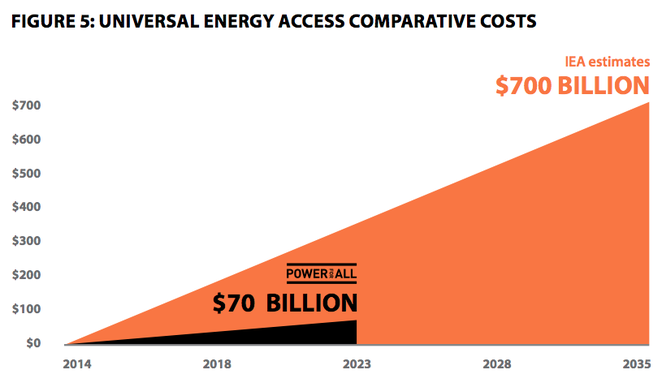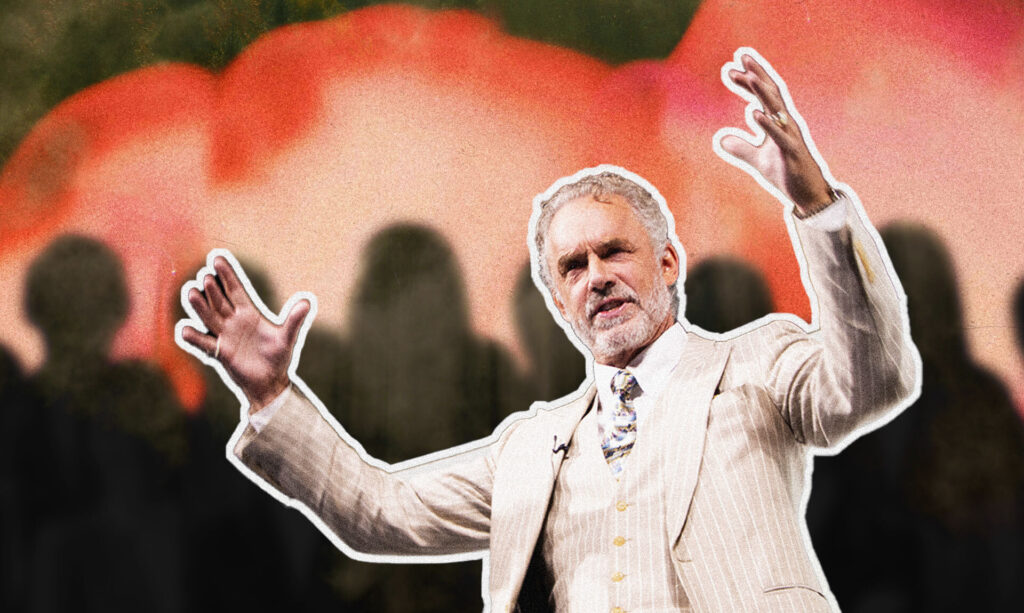Peabody Energy would like you to believe that coal is the only way to light up the homes of the roughly 1.1 billion who still live in energy poverty.
A new campaign launched Thursday at the United Nations’ Sustainable Energy For All Forum in New York City offers a much different solution. Clean, distributed energy sources, argue the groups behind Power for All, can eliminate energy poverty more quickly and for a fraction of the cost of centralized electric grids anchored by fossil fuels. And, of course, without poisoning the air of communities and lining the atmosphere with even more greenhouse gases.
If the world were to invest just $70 billion, energy poverty could be virtually eliminated from the globe within a decade, with renewable energy filling the void.
The battle for the “energy poverty” high ground
“Energy poverty. It’s the world’s number one human and environmental crisis.”
If spoken from the podium at the United Nations’ Sustainable Energy For All events this week, this line would’ve garnered applause. Rather, it’s copy from an ad for the world’s largest privately held coal company, Peabody Energy, which has poured millions into promoting the fossil fuel as the solution to energy poverty through their Advanced Energy for Life PR campaign.
Peabody: Advanced Energy for Life
Which is why this coalition of clean energy companies, non-profits, and policy groups behind Power for All is seeking to reclaim the term from the jaws of fossil fuel industry propaganda, and to promote the healthier, more effective, and cheaper alternative of distributed, off-grid clean energy.
On Thursday, the last day of the Sustainable Energy for All (SE4All) forum, groups officially unveiled the campaign, which “outlines a plan to achieve universal energy access faster, cheaper and cleaner than fossil fuels,” and offers a clear pathway to do so with distributed off-grid clean energy solutions within the next decade.
What Peabody won’t tell you
The International Energy Agency (IEA) estimates that universal access to electricity would require the generation of an additional 952 terawatt hours by 2030. If coal were to make up the difference, that’d be another 150 to 170 new coal-fired power plants, a climate catastrophe to the tune of at least 103 million metric tons of carbon dioxide equivalent spewed into the atmosphere every year.
On the human scale, coal has an ugly track record of providing energy access in the developing world. China has relied heavily on fossil fuels to provide energy access, and the dirty impacts can be seen every day in its cities’ smoggy skylines. The public health implications — 670,000 premature deaths in one year alone — are just beginning to be fully comprehended.
Health and climate aside, there are also decades of evidence that the rural poor waiting for a fossil-fueled grid are doing just that—waiting.
“Since the dawn of electric grids there have been about a billion people without electricity,” said Dan Kammen, Director of the Renewable and Appropriate Energy Labat the University of California, Berkeley at the SE4All forum.
“If we’re going to build out the grid in Africa in all these countries, it’s going to take too long and cost too much money,” added Sam Goldman, founder of d.light, a distributed solar business serving rural Africa and one of the organizers behind Power for All.
Centralized coal simply isn’t practical or economical for providing energy access to the rural poor.
The stunning hypocrisy of Peabody’s Advanced Energy for Life campaign was laid bare by a report released last fall by The Australia Institute, covered here on DeSmogBlog by Graham Readfearn.
Yet intriguingly, when TAI asked Peabody and other coal groups if they were actually giving any money to support energy poverty projects, they found that none of the coal companies were actually using coal projects to solve energy poverty.
Rather, none of the coal companies who were supporting projects in developing countries – including Rio Tinto, BHP Billiton, Anglo American and Banpu – were actually using coal, and were mostly supporting projects based on renewables.
Peabody Energy’s entire charitable giving amounted to just $5 million – or, as the report points out – just 0.07 per cent of the company’s revenue last year, none of which went to on-the-ground projects. The TAI report notes:
Contradicting Peabody’s claims that coal is the most useful fuel for addressing energy poverty, no programs supported by coal companies use coal.
Why does Peabody persist with this Advanced Energy for Life? PR, plain and simple.
“They’re one breath away from bankruptcy,” Bruce Nilles, director of the Sierra Club’s Beyond Coal Campaign told Dan Zegart and Kevin Grandia for an article about the launch of Advanced Energy for Life. “This is really their last gasp. They tried to hoodwink folks that coal is either cheap or somehow clean. Now they’re wrapping their product around addressing world poverty. It’s just the latest gimmick they’ve dreamed up on Madison Avenue.”
“A better path to universal energy access”
Power for All not only presents a clear alternative pathway out of global energy poverty, it also shatters the current expectations for its cost and timeline.
In a 2010 report, the IEA laid out a plan for universal energy access. It figured costs of $700 billion, or $33 billion per year from 2010 through 2030, to electrify all the [then] 1.2 billion still living in energy poverty.
Of those numbers, said Kristina Skierka, Campaign Director for Power for All, “The financial costs are daunting and the opportunity costs are unacceptable. It is time to challenge the $700 billion mindset.”
Power for All’s plans focus “on key accelerators that will help leapfrog ‘business as usual’ energy delivery–just as mobile phones leapfrogged telephone landlines in the developing world–we believe that we can achieve universal energy access in half the time for a fraction of the anticipated costs.”
Power for All’s cost and timeline for deployment. Credit: Power for All, The Energy Access Imperative
”We shouldn’t have to wait a generation for universal energy access,” added Koen Peters, Executive Director of the Global Off-Grid Lighting Association (GOGLA), and a founding member of the Power for All campaign. “Decentralized, renewable market-based solutions can deliver energy access today.”
A report to support the Power for All launch highlighted the various ways in which distributed, renewable energy sources are already leapfrogging the standard grid. Rapidly decreasing costs for household solar systems are driving much of the growth.
From the report: “Component prices for photovoltaics (PV) have dropped 80 percent in the last 5 years; energy storage costs are falling while density is rising; and prices for light-emitting diodes (LEDs) have fallen 90 percent in the last decade, while they have dramatically increased in efficiency and lifetime.“
With costs of clean energy tech – from solar panels to LED lights to batteries – rapidly dropping, Power for All advocates see a clear path to universal energy access in a decade, a timeline that closely resembles the breakneck spread of mobile phone technology in the rural, developing world.
First cell phones, now household solar kits? Credit: Power for All, The Energy Access Imperative
“The market for solar light and power in the developing world is growing quickly to meet demand, and already reaching millions of households,” said Peters. “Several [Global Off-Grid Lighting Association] member companies are already outpacing the world’s traditional electrical utilities in terms of number of customers.”
What will it take?
The pathway laid out by Power for All won’t happen on its own. And Power for All is, by its own description, an education and advocacy campaign. Ultimately, it’s up to governments, non-profit groups and businesses to follow the path to universal clean energy access by 2025.
Power for All’s launch came just a couple days after the World Bank released a report about the state of sustainable energy access. The report found that 222 million people gained access to electricity between 2010 and 2012, as the world population grew by 138 million.
We are heading in the right direction to end energy poverty,” said Anita Marangoly George, Senior Director of the World Bank’s Energy and Extractives Global Practice, “but we are still far from the finish line. We will need to work a lot harder especially to mobilize much larger investments in renewable energy and energy efficiency. Leveraging public finance to mobilize private capital is imperative in achieving these goals.”
Coincidentally, on the very same day the International Monetary Fund released a report about that latter point: public finance. The IMF found that governments internationally were subsidizing fossil fuel consumption by a “shocking” (their word!) $5.3 trillion per year. That’s $10 million every minute.
By comparison, the $70 billion for Power for All’s distributed renewable plan is a pittance.
Subscribe to our newsletter
Stay up to date with DeSmog news and alerts










